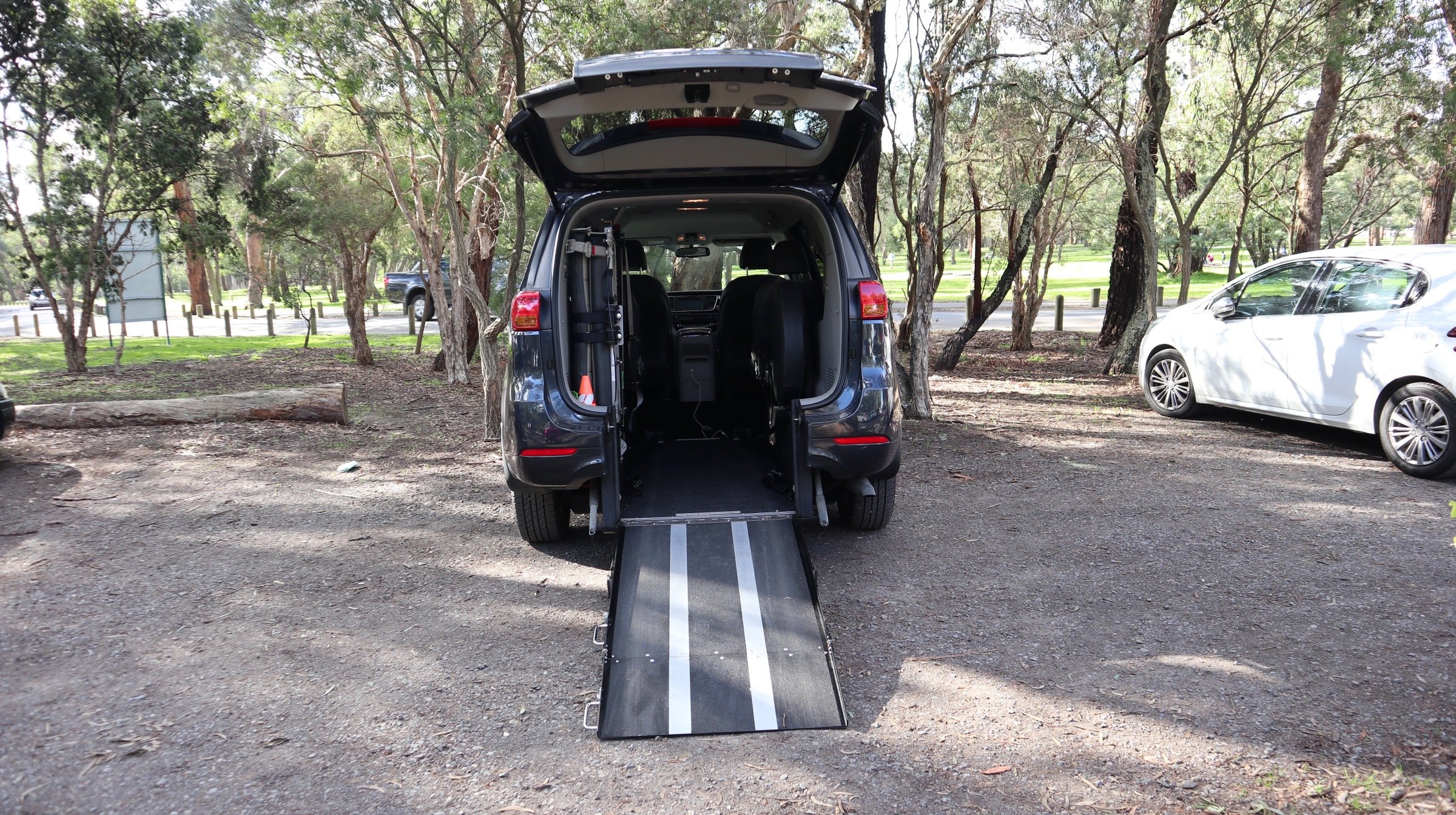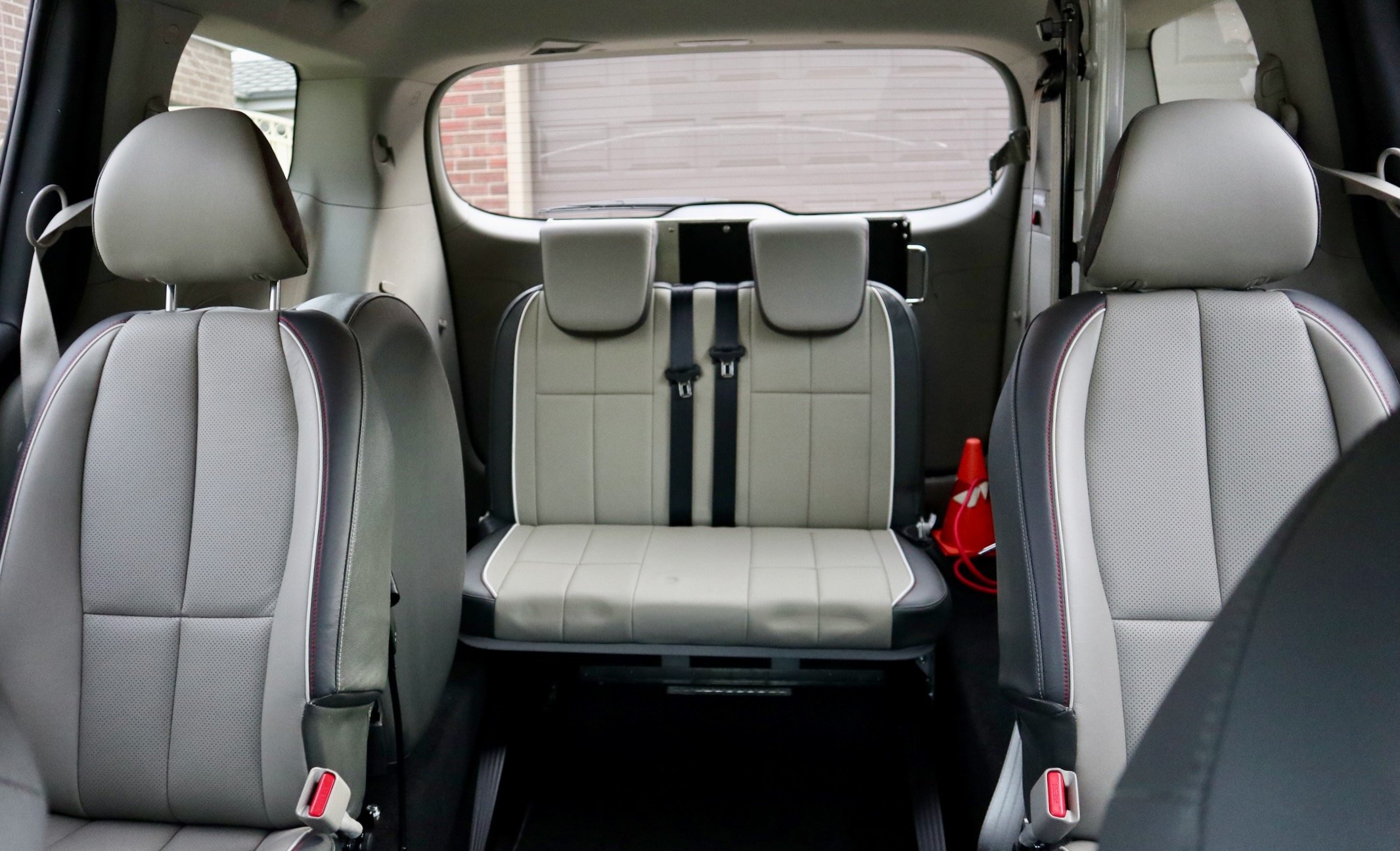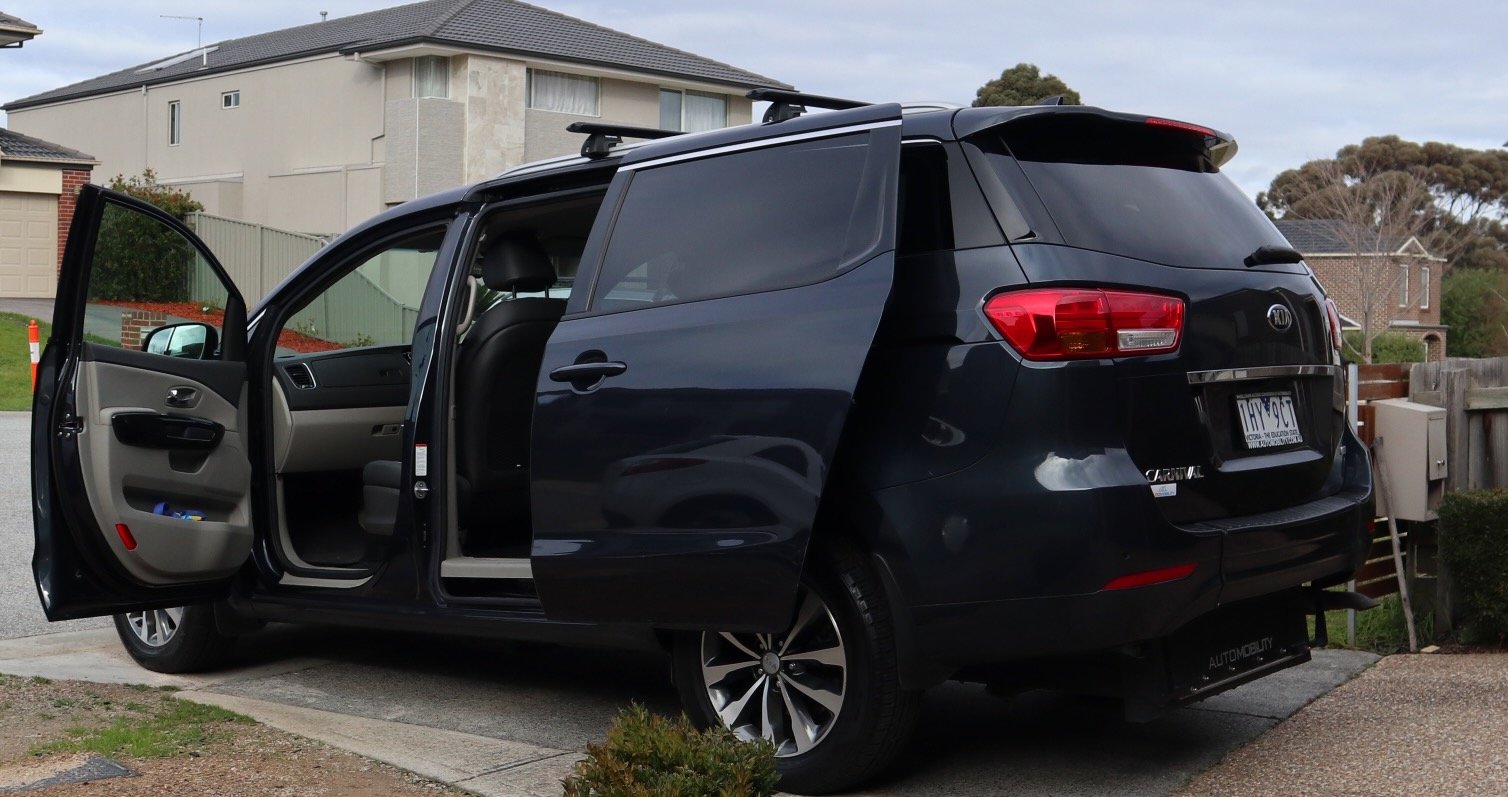Me and My Wheelchair go for a drive
A vehicle modification story
In the Winter of 2016 Gaz and I became the owners of a Kia Carnival.
Not our empty nester vehicle of choice but you can’t have everything.
.
In Spring of that year, I became the wheelchair-using passenger in the newly accessibly modified Kia Carnival.
As you may know from my previous post, the need for a modified vehicle came about due to my inability to drive safely as the symptoms of LGMD worsened. The world of modifications is getting bigger every day and knowing which options to take can be quite daunting. The task of deciding what size and type of car you need and the appropriate modifications together with your budget can’t be taken lightly.
Accessible modifications can be as small as a remote control to open sliding doors to a fully automatic ramp allowing a wheelchair user to enter the car as a passenger or as a driver.
Chapter 1 And an angel appeared…
Without a doubt you need a proactive, learned and connected Occupational Therapist (OT). Our local EACH office sent us an OT who is exemplary in every way and has provided us with lots of advice and information at each stage of my LGMD journey. While she does not specialise in vehicle modifications there are OT’s who do.
One comforting thing about getting advice from someone who has helped others before and knows the local mobility adaptation industry well is that we felt comfortable that our OT was steering us towards reputable companies (although the final responsibility in decision making was always ours).
You can talk to your GP, neurologist or local community health centre for an occupational therapist near you.
Chapter 2 Rare creatures have rare requirements…
What mobility issue do you have and will it be progressive, or do you have a consistent ability base to work with? Plan on doing your research personally and/or with the help of a close friend or family member as well as with your OT into the types of vehicle modifications available. It is time-consuming and gets a little technical at times but it is well worth it for such a big investment financially and in your independent future.
Do you have the use of your upper body? If so you might be able to remain happily non-reliant on others with a driver conversion where you need the alteration of the foot pedal position or hand controls. You may be better off with a swivel passenger or driver’s seat so that you can wheel into your car then transfer onto the seat or a wheelchair driving scenario where you have a wheelchair docking station and can wheel right into the driver’s position.
Or you could modify your vehicle so that you can be a front seat passenger.
As my physical abilities are declining in an unpredictable but progressive trajectory I chose a rear entry ramped conversion in our brand new Kia Carnival with me in my power chair in the middle of the second row. I could have opted for front passenger but decided against it. Once I became adjusted to back seat driving – not such a huge leap and Gaz just loves it – we would be able to retain the option of 6 other seats (including the drivers’) which is quite handy for family and friend’s trips.
Chapter 3 Money might not buy happiness but it sure can drive it…
Equally, if not more important than recognizing your mobility issues is your budget. Here in Australia we have the currently rolling out National Disability Insurance Scheme (NDIS). Basically this joint Commonwealth, State and Territory Governments’ funded scheme assists those that are disabled; their carers and their families. If you qualify for the NDIS you may be able to make a request under the assistive technology (wheelchairs, hoists, car modifications and more) category for the funding of a modification to your vehicle.
Once again, your OT should have the connections and knowledge of any other subsidies that might be available in your area.
As our adaptation was in late 2016 we were awaiting the introduction of the NDIS in our area. Rather than wait for an unknown time we self-funded the car and the modifications.
Chapter 4 Choosing your caboose.
What type of vehicle will fit into your lifestyle, will you convert an existing vehicle or buy a second hand converted car?
In Australia, there are a few makes of cars that can be converted such as some models of KIA, Volkswagen, Proton, Renault, Mercedes, Ford, Hyundai, Toyota and more I’m sure. There is a small second hand market (here is one link and another) for converted vehicles which just might suit your needs at the right time. But for us, as the modification requirements are as individual as we are, none of the second-hand vehicles on offer at the time were suitable.
We knew we wanted a vehicle that was as close to a passenger sedan style as possible and with that in mind we started exploring conversion options. We chose the Kia Carnival which, although classified as a wagon, provides the ability for rear access and the room to convert as we needed as well as having lovely electric sliding doors, Sat Nav, good console storage and sound system and other features important to us.
Once we chose our conversion service provider and the specific adaptation -rear entry and second-row seating – we then knuckled down to specifics. Did we require a wheelchair docking mechanism where the wheelchair has a docking plate under the seat that connects with the dock on the floor of the vehicle?
The other option is an electrical retractable restraint system of seat belt type cabling that is secured to the front and rear of the chair once it is in place. We took that option mostly because it was cheaper and was not difficult to perform each time. It also avoids limiting the clearance under the chair that a docking station creates.
We also thought I would sit in the manual chair sometimes but very soon realised that despite great suspension and the tension of the restraint system, without a headrest/support, I still flailed about a little too much for my physical safety and emotional comfort.
The ramp options were to have it electrically raised and lowered with the push of a button or have a spring-assisted manually operated ramp. The latter option takes a matter of seconds to perform and the two-section fold-out ramp itself barely weighs 3kg’s, and once again, it was the more economical alternative.
Chapter 5 Driving into the future
Our conversion has been very successful for me and although some of my Carer’s and friends have initially been nervous to drive ‘a bus’ and anxious that they wouldn’t secure me correctly, their fears are always allayed after the first trip. Our modern 2016 Kia drives like a car and feels very comfortable and the process of my ‘loading’ is quite simple.
The rare longer carparks that allow safer rear ramp extension are always a pleasure to behold but we have always found other carpark users happy to wait for a minute or two while I access my car.
Although the Kia Carnival was never the aspirational vehicle of choice for either Gaz or me I feel incredibly fortunate to have the resource to achieve a mobility solution. I still have pangs of frustration at not driving and It took me a good six months to not feel completely terror-stricken with each entry and exit via the seemingly narrow, steep ramp but with necessity comes acceptance and I now coast the very safe and secure full 1.2 metres of it like a pro.
Note: I have not accepted any favours or remuneration from any companies mentioned or linked in this blog (and I certainly haven’t done my SEO any favours either). I hope this has assisted you in some way and If I can answer any questions please drop me a line.







